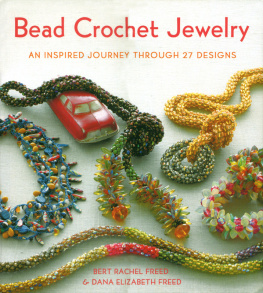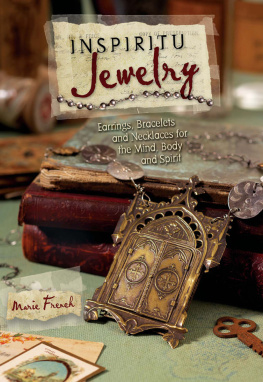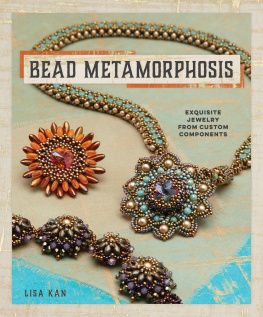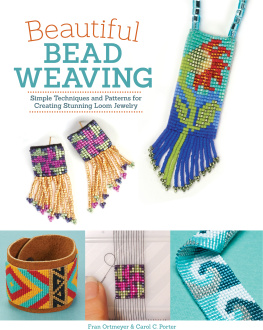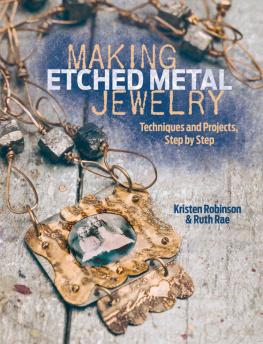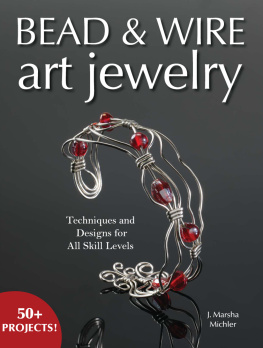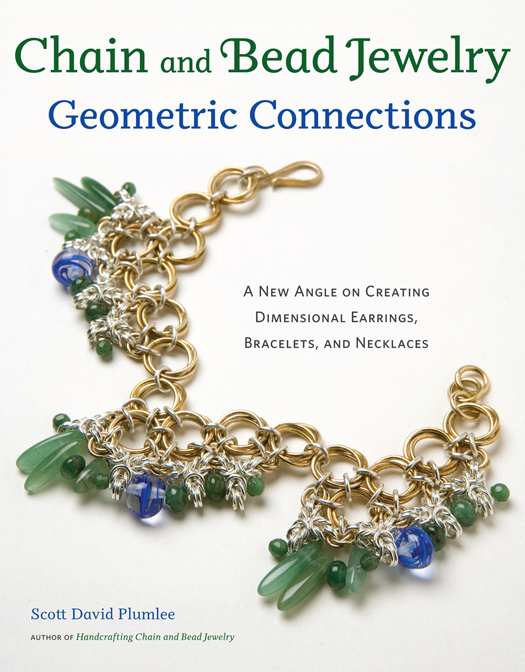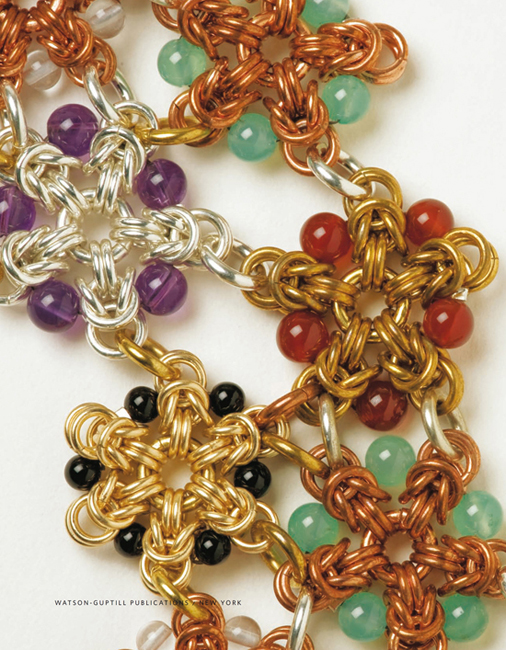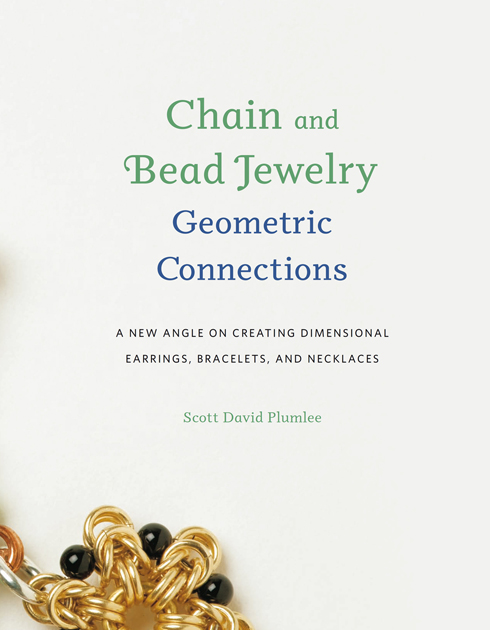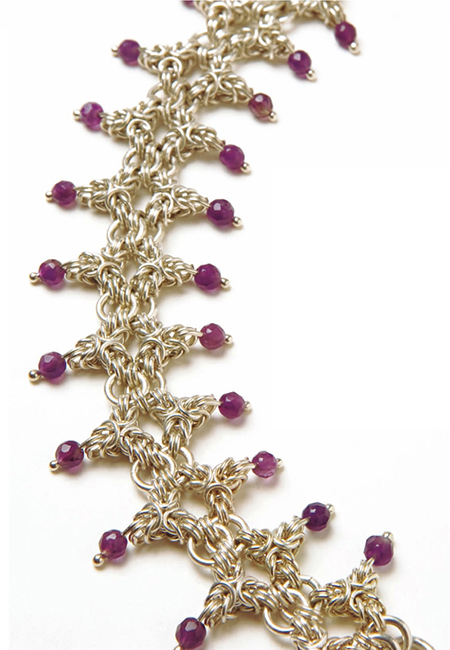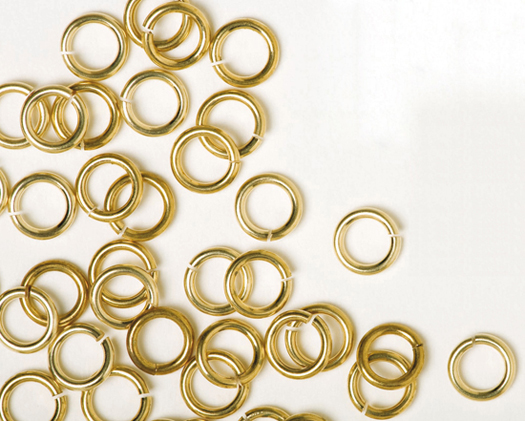Text and step-by-step photography copyright 2010 by Scott David Plumlee
Photography of finished jewelry copyright (c) 2010 by Random House LLC
All rights reserved.
Published in the United States by Potter Craft,
an imprint of the Crown Publishing Group, a division of Random House LLC, a Penguin Random House Company, New York.
www.crownpublishing.com
www.pottercraft.com
POTTER CRAFT and colophon are registered trademarks of Random House LLC.
Originally published in paperback in the United States by Watson-Guptill Publications, an imprint of the Crown Publishing Group, a division of Random House LLC, a Penguin Random House Company, New York, in 2010.
Library of Congress Cataloging-in-Publication Data
Plumlee, Scott David.
Chain and bead jewelry geometric connections : a new angle on creating dimensional earrings, bracelets, and necklaces / Scott David Plumlee.
p. cm.
Includes index.
ISBN 978-0-8230-3339-3
eBook ISBN: 978-0-307-95342-1
1. Jewelry making. 2. Metal-work. 3. Beadwork. I. Title.
TT212.P543 2010
739.27--dc22
2009049289
This book contains general instructions and techniques on making chain jewelry and findings. When working with the tools and materials presented in this book, readers are strongly cautioned to use proper care and judgment, to follow the applicable manufacturers directions, and to seek prompt medical attention in case of an injury. In addition, readers are advised to keep all potentially harmful materials away from children. The author and the publisher expressly disclaim any liability, loss, or risk, personal or otherwise, which is incurred as a consequence, directly or indirectly, of the use and application of any of the contents of this book.
Cover Design: vest design
Designer: Chin-Yee Lai
Photographers: Simon Lee; Scott David Plumlee
v3.1
Acknowledgments
I wish to dedicate this book to everyone who believed in me, especially:
My loving parents, Larry and Shirley, for their encouragement and support
My brother Jeff; his wife, Erika; and their two boys, Isaac and Nathan, for all the smiles
All the students who took workshops and encouraged me to write this book series
All the patrons who purchased my jewelry art and invested in my business
All the teaching institutions that invited me to lead jewelry-making workshops
All the fine art galleries that retail my jewelry and provide representation
Joy Aquilino and all the fine folks at Watson-Guptill / Crown / Random House
Martha Moran for the extraordinary dedication to editing the manuscript
Tim Sheriff at Swanstrom Tools, for all the hard work on the mandrel-tip pliers
Anthony Squillacci at APAC, for making my findings and student supply kits
Sophie Lenoir, for the rooftop photo shoot to capture my face in front of Taos Mountain
Spider, for gifting me the jump rings to make almost all of the projects in this book
Contents
Preface
Welcome to a new plateau of creativity, where shiny metal jump rings and yummy gemstone beads are combined in endless possibilities. Come explore this new horizon with me, as I lead you down a chain-making trail in a jewelry-designing adventure. This is my third book in a series that is dedicated to beaded chain jewelry design, expanding my published repertoire into a sophisticated series of geometry-inspired shapes and patterns.
The art of geometry has always been inspired by natures own delicate designs yet perfected by mans compass and ruler upon paper. Geometry has been utilized throughout history to create our most eye-catching architecturefrom the Egyptian pyramids and European quatrefoil fountains to Washington, DCs Pentagon. These geometric shapes have captured our imagination, and now you can use geometry to your benefit to create stunning jewelry for yourself and your loved ones.
The first two chapters cover metal wire and bead basics, the simple hand tools required, and then continue into the essential chain-making and bead-setting techniques. These skills are put into practice in the third chapter, as the age-old Byzantine chain leads into singular, paired, serrated, and tripled chain patterns. Following this introduction section, the three-way Tripoli formation is illustrated step-by-step to serve as the backbone chain component of the geometric patterns to follow.
This three-way Tripoli formation is utilized individually, paired, and offset with a variety of bead-embellishment techniques as we build momentum into more dimensional jewelry designs. Next, we assemble three Tripoli forms into a Triangle form with a center spiral and explore how this Triangle form can be used individually, as a necklace centerpiece, or doubled-up and repeated into a wide bracelet pattern that connects with a side-by-side magnetic clasping system.
Following this formula, we transcend into using four Tripoli forms to build a four-sided Quatrefoil form and the Trapezoid Bracelet, then five Tripoli forms to build a Pentagon form. The beaded geometric shapes will continue to evolve into the centerpiece of the Pentagram Necklace. Finally, the last chapter, Organic Formations, illustrates a four-way formation into the Fish pattern, a five-way and six-way formation into the Snowflake pattern, and culminating with the Butterfly Necklace centerpiece that has two levels of bead embellishment.
The appendix outlines the basics of making your own headpins from Argentium sterling silver wire. There are illustrated chain configurations at the end of the book, which I think youll refer to often, as well as a resource section that tells you where you can find all the tools and materials used for the projects in this book. Note: For those of you working in the metric system, please refer to the .
Thank you. I hope you get as much satisfaction using this book as I did creating it.
Sincerely jazzed,
Scott David Plumlee
Chain and Bead Basics
The fundamental elements of beaded chain jewelry are youll need, from mandrels, pliers, and calipers to pickling pots and rotary tumblers.
METAL WIRE
Metal wire is the essential component in chain making, and the metals you use must strike a delicate balance between being soft enough to allow jump rings to open and close without breaking and being strong enough to hold the rings round shape and create a sturdy unsoldered chain. Pure metals are for the most part too soft for chain making, so we work with metal alloys, which are composed of several metals that have been melted together to produce a superior end product. Here are some of the metal alloys produced in wire form that I like to work withbronze, copper, gold, and silver.


